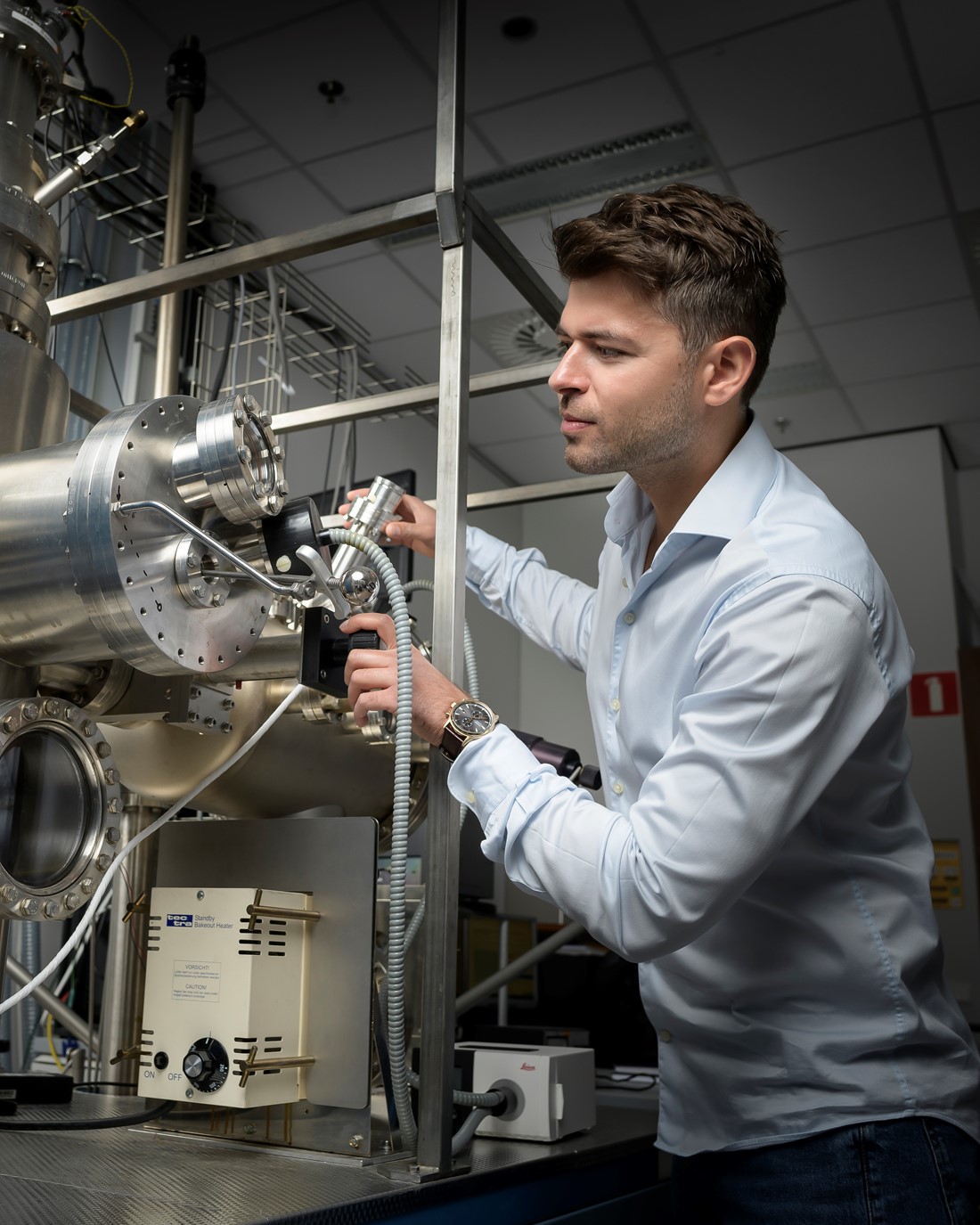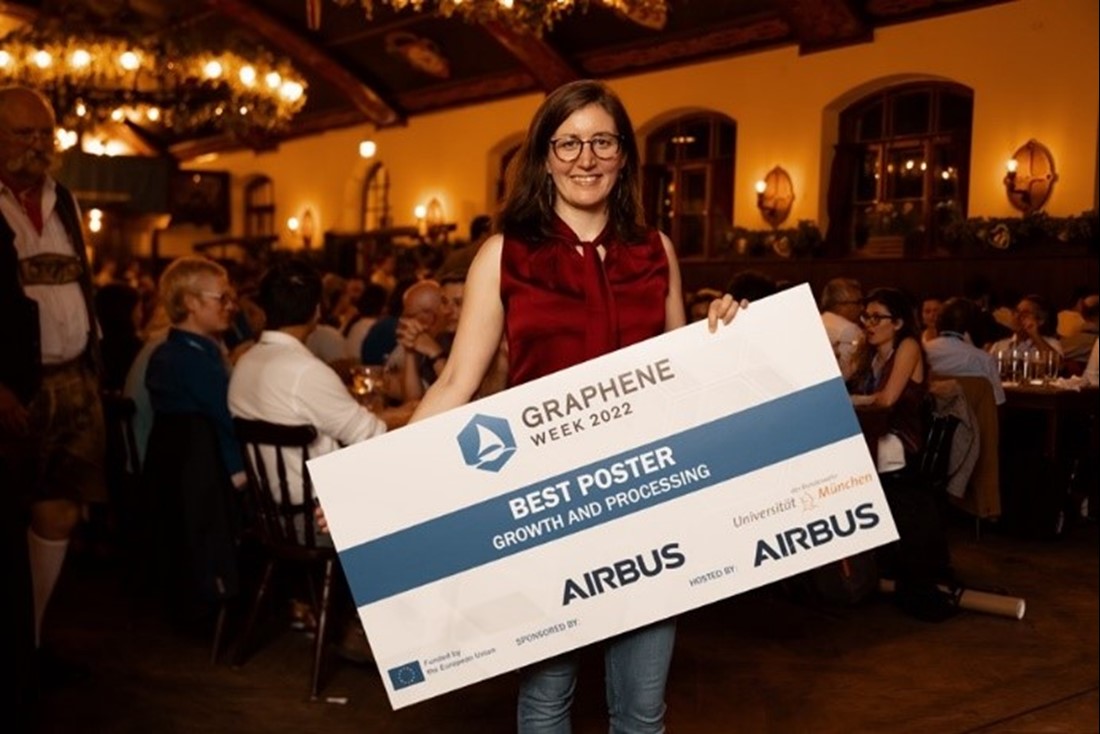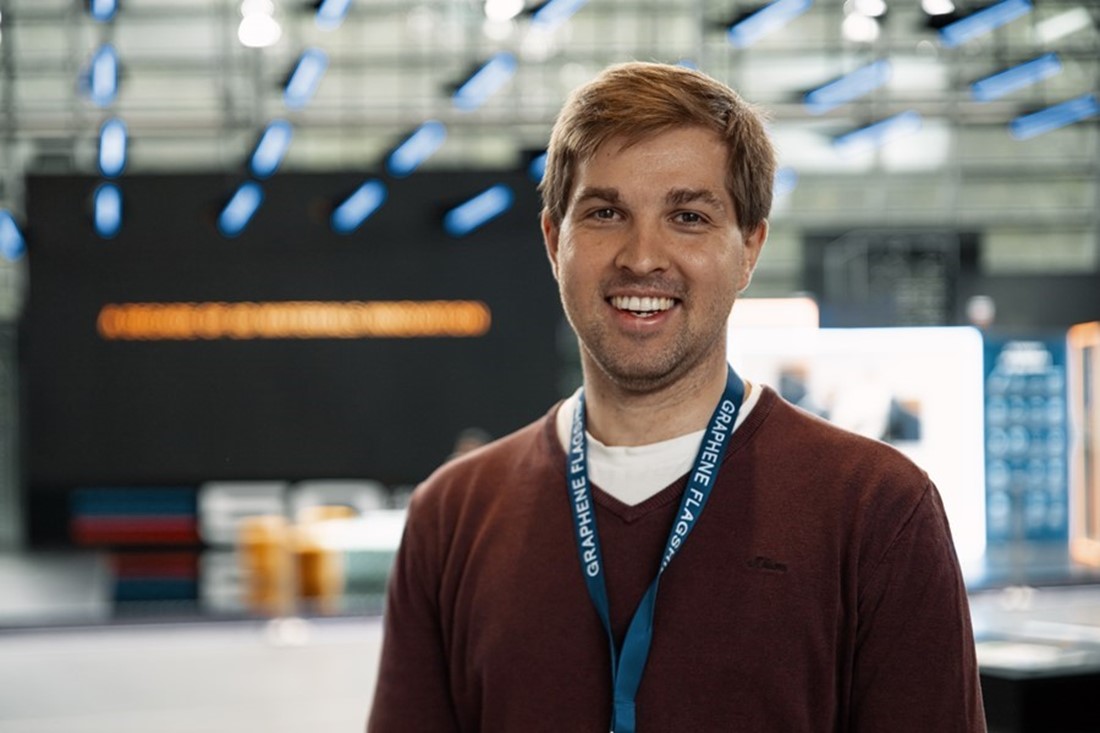Interviews with the three winners - featuring many valuable research insights
Interviews with the three winners - featuring many valuable research insights
Over 270 posters were presented during Graphene Week 2022 in Munich (Germany), with each providing insights into graphene-related research being conducted by hundreds of scientists from around the world.
We ran a poster competition as part of the event, and today have the pleasure of hearing from the three poster winners. These are Pantelis Bampoulis, who won best poster for Fundamentals; Johanna Schirmer, who won best poster for Growth and Processing; and Alexander Storm, who won best poster for Applications.
Spotlight: Demonstrating the electric field-induced phase transition of germanene

Pantelis Bampoulis is an Assistant Professor at the University of Twente in the Netherlands.
What did you present in GW2022?
We demonstrated that germanene undergoes an electronic phase transition. Germanene is an atomically thin layer of germanium atoms arranged in a honeycomb pattern. Unlike graphene, which has a planar structure, germanene has a buckled honeycomb structure, in which half of the atoms are vertically displaced from the other half. The buckling allows alteration of the electronic structure of germanene via the application of an external electric field. We showed that at very low (or zero) electric fields, germanene has a small band gap at its interior and robust, metallic edge states. These are topological in nature: electrons can be transported along germanene’s edges without losing energy.
We turned this dissipation-free state ‘on’ and ‘off’ by applying an external electric field: when a critical electric field is applied to germanene, the topological gap closes, and germanene becomes a semimetal, similar to graphene. Increasing the electric field further causes a gap to open and the edge states to vanish.
What excites you most about this research?
These germanene properties are suitable for room temperature field-effect transistors. However, unlike conventional field-effect transistors, the 'On' state in germanene-based field effect transistors is characterized by transport of charge without loss of energy.
The implementation of germanene in transistors could lead to faster devices, requiring less energy – thus smaller batteries. However, there is still a lot of work to do: we must first investigate further the quantum mechanical properties of germanene, optimize its growth for large-scale applications, and create new device architecture concepts.
What is unique about your research project?
The growth of buckled layered materials composed of larger elements than graphene is impaired by their strong interaction with the underlying (metal) substrate. As a result, they lose their buckling and exotic properties. We were able to decouple germanene from the underlying substrate by using a buffer layer. After establishing that germanene exhibits the properties expected of a quantum spin Hall insulator, we used an external electric field to control its electronic properties. This was the first time an electric field-induced phase transition was reported in a monoelemental honeycomb system such as germanene.
A motivational sentence?
Henri Matisse’s quote "Do not wait for inspiration. It comes while one is working".
Spotlight: Looking at the interface between graphene and neuronal tissues

Johanna Schirmer is a PhD Student in Mika Pettersson’s group, at the University of Jyväskylä in Finland.
What did you present in GW2022?
We focused on the interface between graphene and neuronal tissues for biomedical applications. My job is to create an environment on the graphene surface, in which neurons are viable and functional. Neurons need specific proteins as well as a jelly material around them, which mimics the natural extracellular matrix (ECM) of the brain.
We wanted to understand whether laser-oxidization of graphene has an effect on the gel’s fibrous network. We found out that fibres are made of sheet-like structures on pristine graphene, while we observed helical or disordered structures on oxidized graphene. Thus, laser-oxidation affects gel morphology.
What excites you the most about your research?
I really like to be part of the multidisciplinary “Graphene-based Interfaces for Neuroapplications” (GIN) project. Not only is the goal itself exciting, but so are the various studies involved in it. A lot of groups are all working towards the final target, which is the measurement of electrical and chemical signals from nerve cells with a large array of graphene transistors. I like the challenge of surface chemistry and I focus on microscopy to get everything possible out of the obtained data.
What have you and your team accomplished so far, and what’s next?
Can we guide proteins towards laser-oxidized graphene? Yes. Can we alter the structure of the gel by letting the gel self-assembly happen on a laser-oxidized graphene surface? Yes. With those tools, can we guide neurons towards specific areas on a surface? We will see!
What's the most important thing you learned during your PhD?
Stay positive and take nothing more seriously than it actually is.
Spotlight: Exploring layered materials at the atomic scale

Alexander Storm is a PhD student in Ute Kaiser’s group, at Graphene Flagship Partner University of Ulm in Germany.
What did you present in GW2022?
My poster is about the structural transformations in transition metal phosphorus trichalcogenides (TMPTs): layered materials, which exhibit inherent magnetic properties and can find application as cathode materials in lithium-ion batteries. We studied how to induce local structural transformations in various TMPTs via electron irradiation and annealing in vacuum. Thus, our study showed new pathways for localized transformation of these materials and, as a result, the modification of their fundamental properties.
What excites you the most about your research?
I am working in the field of transmission electron microscopy (TEM) and the most exciting thing for me is the possibility to explore and modify the structure of novel materials on the atomic scale, and then link these observations to their properties on the macroscopic scale.
In the Graphene Flagship Work Package for Enabling Materials, we receive several different high-quality transition metal dichalcogenides (TMDs), TMPTs and other layered materials from our partners. Using our unique Sub Angstrom Low Voltage Electron microscopy (SALVE) at Ulm University, we study, characterize and functionalise them at the atomic scale. In this way, we can give our partners important information on the growth and processing of these materials.
What is the most important thing you learned during your PhD?
Endurance and teamwork are the most important skills in modern science.




